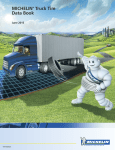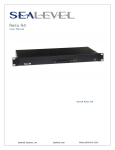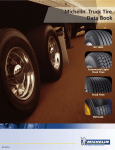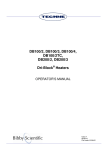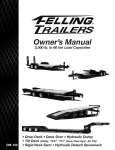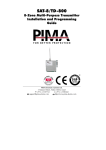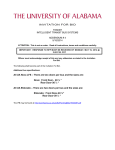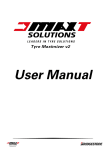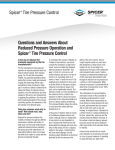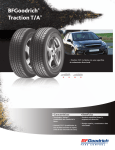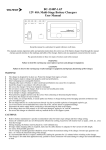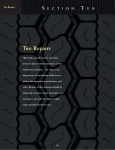Download BFGoodrich Truck Tire Data Book - New England Truck Tire Centers
Transcript
BFGoodrich® Commercial Truck Tire DATA BOOK January 2011 To Find Your Nearest BFGoodrich® Commercial Truck Tire Dealer Call: United States, 1-877-788-8899 Canada, 1-888-871-6666 Mexico, 011-52-442-296-1600 or visit www.bfgoodrichtrucktires.com Copyright © 2011 MNA, Inc. All rights reserved. BWT42029 (01/11) TABLE OF CONTENTS GENERAL INSTRUCTIONS Part 1: Safety – Mounting the Tire . . . . . . . . . . . . . . . . . . . . . . . . . . . . . . . 2 Part 2: Mounting and Demounting Tubeless Tires . . . . . . . . . . . . . . . . . 4 Part 3: Mounting and Demounting Tube-Type Tires . . . . . . . . . . . . . . . 7 HIGHWAY/REGIONAL TIRES ST244™ . . . . . . . . . . . . . . . . . . . . . . . . . . . . . . . . . . . . . . . . . . . . . . . . . . . . . 10 ST230™ . . . . . . . . . . . . . . . . . . . . . . . . . . . . . . . . . . . . . . . . . . . . . . . . . . . . . 11 TR144™ . . . . . . . . . . . . . . . . . . . . . . . . . . . . . . . . . . . . . . . . . . . . . . . . . . . . . 12 DR444™ . . . . . . . . . . . . . . . . . . . . . . . . . . . . . . . . . . . . . . . . . . . . . . . . . . . . 13 ON/OFF ROAD TIRES ST576™ . . . . . . . . . . . . . . . . . . . . . . . . . . . . . . . . . . . . . . . . . . . . . . . . . . . . . 14 DR675™ . . . . . . . . . . . . . . . . . . . . . . . . . . . . . . . . . . . . . . . . . . . . . . . . . . . . 15 ST565™ Wide Base . . . . . . . . . . . . . . . . . . . . . . . . . . . . . . . . . . . . . . . . . . . 16 Load/Inflation Table . . . . . . . . . . . . . . . . . . . . . . . . . . . . . . . . . . . . . . . . . 17 General Information . . . . . . . . . . . . . . . . . . . . . . . . . . . . . . . . . . . . . 18-19 1 GENERAL INSTRUCTIONS PART 1: SAFETY – MOUNTING THE TIRE IMPORTANT: BE SURE TO READ THIS SAFETY INFORMATION. Make sure that everyone who services tires or vehicles in your operation has read and understands these warnings. SERIOUS INJURY OR DEATH CAN RESULT FROM FAILURE TO FOLLOW SAFETY WARNINGS. No matter how well any tire is constructed, punctures, impact damage, improper inflation, improper maintenance, or service factors may cause tire failure creating a risk of property damage and serious or fatal injury. Truck operators should examine their tires frequently for snags, bulges, excessive treadwear, separations, or cuts. If such conditions appear, demount the tire and see a truck dealer immediately. The US Department of Labor Occupational Safety and Health Administration (OSHA) provides regulations and publications for safe operating procedures in the servicing of wheels. Please refer to OSHA Standard 29 CFR Part 1910.177 (Servicing Multi-Piece and Single Piece Rim Wheels). Specifically, note that the employer shall provide a program to train all employees who service wheels in the hazards involved in servicing those wheels and the safety procedures to be followed. The employer shall ensure that no employee services any wheel unless the employee has been trained and instructed in correct procedures of servicing the type of wheel being serviced, and shall establish safe operating procedures for such service. BFGoodrich® Truck Tires provides the following information to further assist employers to comply with that initiative. Tire and wheel servicing can be dangerous and must be done only by trained personnel using proper tools and procedures. Failure to read and comply with all procedures may result in serious injury or death to you or others. Re-inflation of any type of tire and wheel assembly that has been operated in a run-flat or underinflated condition (80% or less of recommended operating pressure) can result in serious injury or death. The tire may be damaged on the inside and can explode during inflation. The wheel parts may be worn, damaged, or dislodged and can explosively separate. Refer to RMA Tire Information Service Bulletin on potential “zipper ruptures” – TISB Volume 33, Number 3 (December 2007). RMA (Rubber Manufacturers Association) recommends that any tire suspected of having been run underinflated and/or overloaded must remain in the safety cage, be inflated to 20 psi OVER maximum pressure marked on the sidewall, and then be inspected. Do not exceed the maximum inflation pressure for the wheel. Be sure to reduce pressure to regular operating pressure before placing back in service if the tire has been deemed serviceable. Use of starting fluid, ether, gasoline, or any other flammable material to lubricate, seal, or seat the beads of a tubeless tire can cause the tire to explode or can cause the explosive separation of the tire and wheel assembly resulting in serious injury or death. The use of any flammable material during tire servicing is absolutely prohibited. Any inflated tire mounted on a wheel contains explosive energy. The use of damaged, mismatched, or improperly assembled tire and wheel parts can cause the assembly to burst apart with explosive force. If you are struck by an exploding tire, wheel part, or the blast, you can be seriously injured or killed. Re-assembly and inflation of mismatched parts can result in serious injury or death. Just because parts fit together does not mean that they belong together. Check for proper matching of all wheel parts before putting any parts together. Mismatching tire and wheel component is dangerous. A mismatched tire and wheel assembly may explode and can result in serious injury or death. This warning applies to any combination of mismatched components and wheel combinations. Never assemble a tire and wheel unless you have positively identified and correctly matched the parts. 2 ZIPPER RUPTURES TIRE INSPECTION A fatigue-related damage, with or without a rupture, occurs in the sidewall flex area of steel radial light and medium truck tires when it is subjected to excessive flexing or heat. This zipper rupture is a spontaneous burst of compressed gas, and the resulting rupture can range in length anywhere from 12 inches to 3 feet circumferentially around the tire. This is caused by the damage and weakening of the radial steel cables as a result of run-flat, underinflation, or overload. Eventually, the pressure becomes too great for the weakened cables to hold, and the area ruptures with tremendous force. The RMA (Rubber Manufacturers Association) states that permanent tire damage due to underinflation and/or overloading cannot always be detected. Any tire known or suspected of having been run at 80% or less of normal operating inflation pressure and/or overloaded, could possibly have permanent structural damage (steel cord fatigue). The RMA has issued a revised Tire Industry Service Bulletin for procedures to address zipper ruptures in certain commercial vehicle tires. The purpose of the bulletin is to describe the inspection procedures for identifying potential sidewall circumferential ruptures (also known as “zipper ruptures”) on truck/bus tires and light-truck tires of steel cord radial construction. Zipper ruptures can be extremely hazardous to tire repair technicians. Careful adherence to proper repair procedures is crucial. For more information contact RMA at [email protected] or visit www.rma.org. Tire inspection should always include a thorough inspection of both sidewalls and inner liner, as this may reveal any potential damage condition that would cause the tire to become scrap. Examine the inner liner for creases, wrinkling, discoloration, or insufficient repairs, and examine the exterior for signs of bumps or undulations, as well as broken cords, any of which could be potential out of service causes. Proper OSHA regulations must be followed when putting any tire and wheel back in service. After the tire has been inflated to 20 psi in a safety cage, it should undergo another sidewall inspection for distortions, undulations, or popping noises indicating a breaking of the steel cords. If this is the case, immediately fully deflate and scrap the tire. If no damage is detected, continue to inflate to the maximum pressure marked on the sidewall. Do not exceed the maximum inflation pressure for the wheel. Any tire suspected of having been run underinflated and/or overloaded must remain in the safety cage, be inflated to 20 psi OVER maximum pressure marked on the sidewall, and then be inspected. 3 PART 2: MOUNTING AND DEMOUNTING TUBELESS TIRES In order for a tire to perform properly, it must be mounted on the correct size wheel. The following are general instructions for mounting and demounting BFGoodrich® Truck tubeless tires. Specifics for 19.5" wheels are detailed in the Mounting Tubeless Tire section (Page 5). For additional detailed instructions on mounting and demounting truck tires on particular types of wheels, refer to the instructions of the wheel manufacturer or the RMA wall charts. components during the sudden release of the contained gas of a single piece wheel. Refer to current OSHA standards for compliance. Do not bolt safety cages to the floor nor add any other restraints or accessories. Cage should be placed 3 feet from anything, including the wall. Never stand over a tire or in front of a tire when inflating. Always use a clip-on valve chuck with an in-line valve fitted with a pressure gauge or use a presettable regulator. Additionally, ensure there is a sufficient length of hose between the clip-on chuck and the in-line valve (if one is used) to allow the service technician to stand outside the trajectory zone when inflating. Trajectory zone means any potential path or route that a wheel component may travel during an explosive separation or the sudden release of the pressurized gas, or an area at which the blast from a single piece wheel may be released. The trajectory may deviate from paths that are perpendicular to the assembled position of the wheel at the time of separation or explosion. See Rubber Manufacturers Association Tire Information Service Bulletin Volume 33, Number 3 (December 2007) for more information. TUBELESS TIRE MOUNTING/DEMOUNTING USING A MOUNTING MACHINE There are several tire changing machines available for the mount and demount procedure. Consult the manufacturer’s user manual for the machine you are using as each operates differently. Full lubrication of the wheel and beads is still required. Inflation process requirements remain the same. DIRECTIONAL TIRES Truck tires featuring directional tread designs have arrows molded into the shoulder/edge of the outer ribs to indicate the intended direction of tire rotation. It is important, to maximize tire performance, that directional tires be mounted correctly on wheels to ensure that the directionality is respected when mounted on the vehicle. For example, when mounting directional drive tires on a set of 8 wheels, use the drop centers as a reference. Four tires should be mounted with the arrows pointing to the left of the technician and four tires with the arrows pointing to the right. This ensures that when the assemblies are fitted onto the vehicle that all tires can be pointed in the desired direction of rotation. Directional steer tires should be mounted in a similar fashion, one each direction, to ensure both are pointed forward. Once directional tires are worn greater than 50%, there is generally no negative effect of running them in a direction opposite to the indicated direction of rotation. Operating directional tires from new to 50% worn in the opposite direction of that indicated on the tire will result in the premature onset of irregular wear, excessive noise levels, and significantly reduced tread life. 2. TIRE AND WHEEL LUBRICATION It is essential that an approved tire mounting lubricant be used. Preferred materials for use as bead lubricants are vegetable based and mixed with proper water ratios per manufacturer’s instructions. Never use antifreeze, silicones, or petroleum-base lubricants as this will damage the rubber. Lubricants not mixed to the manufacturer’s specifications may have a harmful effect on the tire and wheel. The lubricant serves the following three purposes: • Helps minimize the possibility of damage to the tire beads from the mounting tools. • Helps ease the insertion of the tire onto the wheel by lubricating all contacting surfaces. • Assists proper bead seating (tire and wheel centering) and helps to prevent eccentric mountings. Apply a clean lubricant to all portions of the tire bead area and the exposed portion of the flap using sufficient but sparing quantities of lubricant. Also, lubricate the entire rim surface of the wheel. Avoid using excessive amounts of lubricant, which can become trapped between the tire and tube and can result in tube damage and rapid air loss. 1. SELECTION OF PROPER COMPONENTS AND MATERIALS a. All tires must be mounted on the proper wheel as indicated in the specification tables. For complete tire specifications, refer to application specific data books. b. Make certain that wheel is proper for the tire dimension. c. Always install new valve cores and metal valve caps containing plastic or rubber seals. d. Always replace the rubber valve stem on a 16" through 19.5" wheel. e. Always use a safety device such as an inflation cage or other restraining device that will constrain all wheel CAUTION: It is important that tire lubricant be clean and free of dirt, sand, metal shavings, or other hard particles. The following practice is recommended: a. Use a fresh supply of tire lubricant each day, drawing from a clean supply source and placing the lubricant in a clean portable container. b. Provide a cover for the portable container and/or other means to prevent contamination of the lubricant when not in use. For lubricants in solution, we suggest the following method 4 that has proven to be successful in helping to minimize contamination and prevent excess lubricant from entering the tire casing: provide a special cover for the portable container that has a funnel-like device attached. The small opening of the funnel should be sized so that when a swab is inserted through the opening into the reserve of lubricant and then withdrawn, the swab is compressed, removing excess lubricant. This allows the cover to be left in place providing added protection. A mesh false bottom in the container is a further protection against contaminants. The tire should be mounted and inflated promptly before lubricant dries. symmetric wheel profile facilitating tire mounting from either side.) It is imperative that the tire always be mounted and dismounted only from the short side. Failure to do this will likely result in damaged tire beads that could eventually cause rapid gas loss due to casing rupture. This is particularly important on 19.5 inch RW (reduced well) aluminum wheels which, contrary to the norm, have their drop center located close to the disc side. Do not use 19.5 x 7.50 wheel for the 305/70R19.5 tire size. All 19.5 inch tubeless wheels should be mounted from the short side. Care should be taken to ensure that any internal monitoring system molded in the tire or on the wheel is not damaged or dislodged during this service. 5. Do not use any kind of hammer. Severe inner liner damage may occur resulting in sidewall separation and tire destruction. Use only proper mounting levers; 3. PREPARATION OF WHEELS AND TIRES a. Always wear safety goggles or face shields when buffing or grinding wheels. b. Inspect wheel assemblies for cracks, distortion, and deformation of flanges. Using a file and/or emery cloth, smooth all burrs, welds, dents, etc. that are present on the tire side of the wheel. Inspect the condition of bolt holes on the wheels. Rim flange gauges and ball tapes are available for measuring wear and circumference of aluminum wheels. c. Remove rust with a wire brush and apply a rust inhibiting paint on steel wheels. The maximum paint thickness is 0.0035" on the disc face of the wheel. d. Remove any accumulation of rubber or grease that might be stuck to the tire, being careful not to damage it. Wipe the beads down with a dry rag. DO NOT USE A DUCK BILL HAMMER. Re-inflation of any type of tire and wheel assembly that has been operated in a run-flat or underinflated condition (less than 80% of normal recommended operating pressure) can result in serious injury or death. The tire may be damaged on the inside and can explode during inflation. The wheel parts may be worn, damaged or dislodged and can explosively separate. MOUNTING TUBELESS 1. Inspect the condition of the bolt holes on the wheels, and look for signs of fatigue. Check flanges for excessive wear by using the wheel manufacturer’s flange wear indicator. 2. Replace valve core, and inspect valve stem for damage and wear. Michelin recommends always replacing the valve stem and using a new valve stem grommet. Ensure valve stem is installed using the proper torque value. 80-125 in/lbs (7-11 ft/lbs) for standard aluminum wheels and 35-55 in/lbs (3-5 ft/lbs) for standard tubeless steel wheels. Ensure the valve core is installed using the proper torque value of 1.5-4 in/lbs. To prevent galvanic corrosion on aluminum wheels, lubricate the threads and O-ring of the valve stem with a non-waterbased lubricant before installation. 3. Apply the tire and wheel lubricant to the rim surface of the wheel and bead area of the tire. When applying lubricant to the wheel, lubricate the entire rim surface from flange to flange. The tire should be mounted and inflated before the lubricant dries. 4. With short ledge up, lay the tire over the wheel opposite the valve side and work it on with proper tubeless tire tools, making full use of the drop center well. Drop center wheels are typically designed with an off-set drop center to accommodate wheel width and brake clearance. This creates a “short side” and a “long side” on the wheel. (Some drop center wheels are designed with a INFLATION OF TUBELESS TIRES 1. Lay tire/wheel assembly horizontally and inflate to no more than 5 psi to position the beads on the flanges. OSHA dictates no more than 5 psi outside the cage to seat the beads. 2. To complete the seating of the beads, place the assembly in an OSHA (Occupational Safety and Health Administration) compliant inflation restraining device (i.e. safety cage) and inflate to 20 psi. Check the assembly carefully for any signs of distortion or irregularities from run-flat. If run-flat is detected, scrap the tire. 3. If no damage is detected, continue to inflate to the maximum pressure marked on the sidewall. RMA (Rubber Manufacturers Association) recommends that if any tire suspected of having been underinflated and/or overloaded must remain in the safety cage at 20 psi over the maximum pressure marked on the sidewall. Do not exceed the maximum inflation pressure for the wheel. RMA requires that all steer sidewall tires are inflated without a valve core. 4. Ensure that the guide rib (GG Ring/mold line) is positioned concentrically to the rim flange with no greater than 2⁄ 32" of difference found circumferentially. Check for this variation by 5 measuring at four sidewall locations (12, 3, 6, 9 o’clock). If bead(s) did not seat, deflate tire, re-lubricate the bead seats and re-inflate. Note: As a general guide in vibration analysis, the 30/60/90 rule may apply: .030-.060 (1⁄ 32 to 2 ⁄ 32 inch) = No action is required. Limited possibility for vibration exists, and this range maximizes the ability to balance properly. .061-.090 (2 ⁄ 32 to 3⁄ 32 inch) = Corrective action would be to perform the 3 R’s, after deflating the tire. – Rotate the tire on the wheel – Re-lubricate the tire and wheel (ensure the wheel is very clean) – Re-inflate ensuring your initial inflation is with the tire lying horizontal (3-5 psi max) >.090 (>3⁄ 32 inch) = Perform 3 R’s if mismount is indicated; however, when the reading is this high, it usually requires checking runout on these component parts: wheels/hubs/drums/wheel bearings. 5. After beads are properly seated, place the tire in safety cage and inflate assembly to maximum pressure rating shown on the sidewall, then reduce to operating pressure. Check valve core for leakage, then install suitable valve cap. Consider the use of inflate-thru or double seal valve caps for easier pressure maintenance. DEMOUNTING OF TUBELESS TIRES 1. If still fitted on the vehicle, completely deflate the tire by removing the valve core. In the case of a dual assembly, completely deflate both tires before removing them from the vehicle (OSHA requirement). Run a wire or a pipe cleaner through the valve stem to ensure complete deflation. 2. With the tire assembly lying flat (after deflating the tire), break the bead seat of both beads with a bead breaking tool. Do not use hammers of any type to seat the bead. Striking a wheel assembly with a hammer of any type can damage the tire or wheel and endanger the installer. Use a steel duck bill hammer only as a wedge. Do not strike the head of a hammer with another hard faced hammer – use a rubber mallet. 3. Apply the vegetable-based lubricant to all surfaces of the bead area of the tire. 4. Beginning at the valve, remove the tire from the wheel. Starting at the valve will minimize chances of damaging the valve assembly. Make certain that the rim flange with the tapered ledge that is closest to the drop center is facing up. Insert the curved ends of the tire irons between the tire and rim flange. Step forward into the drop center and drop the bars down, lifting the tire bead over the rim flange. Hold one tire iron in position with your foot. Pull the second tire iron out and reposition it about 90 degrees from the first iron. Pull the second tire iron towards the center of the wheel. Continue to work tools around wheel until first bead is off the wheel. 5. Lift the assembly, place and rotate the tire iron to lock on the back rim flange, allow the tire to drop, and with a rocking motion remove the tire from the wheel. 6 PART 3: MOUNTING AND DEMOUNTING TUBE-TYPE TIRES A tire cannot perform properly unless it is mounted properly on the correct size wheel. The following are general instructions for demounting and mounting BFGoodrich® tube-type tires. For detailed instructions on mounting and demounting truck tires on particular types of wheels, refer to the instructions of the wheel manufacturer or the RMA wall charts. Do not re-inflate any tires that have been run underinflated or flat without careful inspection for damage. If run-flat damage is detected, scrap the tire. A tire is considered run-flat if it is found to be less than 80% of normal recommended operating pressure. This can result in serious injury or death. The tire may be damaged on the inside and can explode during inflation. The wheel parts may be worn, damaged or dislodged and can explosively separate. may deviate from paths that are perpendicular to the assembled position of the wheel at the time of separation or explosion. 1. SELECTION OF PROPER COMPONENTS AND MATERIALS NEVER WELD OR APPLY HEAT TO A WHEEL ON WHICH A TIRE IS MOUNTED. a. All tires must be mounted with the proper tube and flap (if required) and wheel as indicated in the specification tables. For complete tire specifications, refer to application specific data books. b. Make certain that wheel components are properly matched and of the correct dimensions for the tire. c. Always fit a new tube in a new mounting. Since a tube will exhibit growth in size through normal use, an old tube used in a new mounting increases the possibility of tube creasing and chafing, possibly resulting in failure. d. Always install a new flap in a new mounting. A flap, through extended use, becomes hard and brittle. After a limited time, it will develop a set to match the tire and wheel in which it is fitted. Therefore, it will not exactly match a new tire and wheel combination. e. Always install new valve cores and metal valve caps containing plastic or rubber seals. For tires requiring O-rings, be sure to properly install a new silicone O-ring at every tire change. f. Always use a safety device such as an inflation cage or other restraining device that will constrain all wheel components during an explosive separation of a multi-piece wheel, or during the sudden release of the contained gas of a single piece wheel that is in compliance with OSHA (Occupational Safety and Health Administration) standards. Do not bolt restraining device to the floor. Never stand over a tire or in front of a tire when inflating. Always use a clip-on valve chuck with an in-line valve with a pressure gauge or a presettable regulator. Additionally, ensure there is a sufficient length of hose between the clip-on chuck and the in line valve (if one is used) to allow the service technician to stand outside the trajectory path when inflating. Trajectory zone means any potential path or route that a wheel component may travel during an explosive separation, or the sudden release of the pressurized gas, or an area at which the blast from a single piece wheel may be released. The trajectory 2. TIRE AND WHEEL LUBRICATION It is essential that an approved tire mounting lubricant be used. Preferred materials for use as bead lubricants are vegetable based and mixed with proper water ratios per manufacturer’s instructions. Never use antifreeze, silicones, or petroleum-base lubricants as this will damage the rubber. Lubricants not mixed to the manufacturer’s specifications may have a harmful effect on the tire and wheel. The lubricant serves the following three purposes: • Helps minimize the possibility of damage to the tire beads from the mounting tools. • Helps ease the insertion of the tire onto the wheel by lubricating all contacting surfaces. • Assists proper bead seating (tire and wheel centering) and helps to prevent eccentric mountings. Apply a clean lubricant to all portions of the tire bead area and the exposed portion of the flap using sufficient but sparing quantities of lubricant. Also, lubricate the entire rim surface. Avoid using excessive amounts of lubricant, which can become trapped between the tire and tube and can result in tube damage and rapid gas loss. CAUTION: It is important that tire lubricant be clean and free of dirt, sand, metal shavings, or other hard particles. The following practice is recommended: a. Use a fresh supply of tire lubricant each day, drawing from a clean supply source and placing the lubricant in a clean portable container. b. Provide a cover for the portable container and/or other means to prevent contamination of the lubricant when not in use. For lubricants in solution, we suggest the following method, which has proven to be successful in helping to minimize contamination and prevent excess lubricant from entering the 7 tire casing: provide a special cover for the portable container that has a funnel-like device attached. The small opening of the funnel should be sized so that when a swab is inserted through the opening into the reserve of lubricant and then withdrawn, the swab is compressed, removing excess lubricant. This allows the cover to be left in place providing added protection. A mesh false bottom in the container is a further protection against contaminants. The tire should be mounted and inflated promptly before lubricant dries. DEMOUNTING TUBE-TYPE TIRE 1. Before loosening any nuts securing the tire and wheel assembly to the vehicle, remove the valve core and deflate completely. If working on a dual assembly, completely deflate both tires. Run a wire or pipe cleaner through the valve stem to ensure complete deflation. This is to prevent a possible accident. 2. Remove the tire and wheel assembly from the vehicle and place on the floor with the side ring up. 3. Run a wire or pipe cleaner through the valve stem to clear the valve stem. 4. Apply lubricant to all surfaces of the bead area of the tire. Use the duck bill hammer, with the rubber mallet as a wedge, or a slide hammer. 5. For two-piece wheels, remove the side ring by pushing the tire bead down. Insert the tapered end of the rim tool into the notch and pry the side ring out of the gutter. Pry progressively around the tire until the side ring is free of the gutter. 6. For three-piece wheels, remove the lock ring by pushing the side rings and the tire bead down. Insert the tapered end of the rim tool into the notch near the split in the lock ring, push the tool downward, and pry the lock ring outward to remove the gutter from the base. Use the hooked end of the rim tool progressively around the tire to complete the removal, then lift off the side ring. 7. Turn the assembly over. 8. Unseat the remaining tire bead from the rim, and lift the rim from the tire. 3. PREPARATION OF WHEELS AND TIRES a. Always wear safety goggles or face shields when buffing or grinding wheels. b. Inspect wheel assemblies for cracks, distortion, and deformation of flanges. Using a file and/or emery cloth, smooth all burrs, welds, dents, etc. that are present on the tire side of the wheel. Inspect the condition of bolt holes on the wheels. Rim flange gauges and ball tapes are available for measuring wear and circumference of aluminum wheels. c. Remove rust with a wire brush and apply a rust inhibiting paint on steel wheels. The maximum paint thickness is .0035" on the disc face of the wheel. d. Remove any accumulation of rubber or grease stuck to the tire, being careful not to damage it. Wipe the beads down with a dry rag. Any inflated tire mounted on a wheel contains explosive energy. The use of damaged, mismatched or improperly assembled tire and wheel parts can cause the assembly to burst apart with explosive force. If you are struck by an exploding tire, wheel part or the blast, you can be seriously injured or killed. Do not attempt to dismount the tire while the assembly is still installed on the vehicle. Use proper tools to demount or mount wheel parts. Never use a steel hammer to seat wheel parts – use only rubber, plastic, or brass-tipped mallets. Striking a wheel assembly with a hammer of any type can damage the tire or wheel and endanger the installer. Use a steel duck bill hammer only as a wedge. Do not strike the head of a hammer with another hard-faced hammer – use a rubber mallet. Re-assembly and inflation of mismatched parts can result in serious injury or death. Just because parts fit together does not mean that they belong together. Check for proper matching of all wheel parts before putting any parts together. Inspect the tire and the wheel for any damage that would require them to be placed out of service. Mismatching tire and wheel components is dangerous. A mismatched tire and wheel assembly may explode and can result in serious injury or death. This warning applies to any combination of mismatched components, and wheel combinations. Never assemble a tire and wheel unless you have positively identified and correctly matched the parts. 8 6. Apply a proper tire lubricant to the inside and outside surfaces of both beads and to that portion of the flap that appears between the beads. Make sure that excess lubricant does not run down into the tire. 7. Follow Steps 4 through 8 of the “Mounting of Tube-Type Tires.” MOUNTING TUBE-TYPE TIRE 1. Insert the proper size tube into the tire and partially inflate (3 psi) to round out the tube (with larger sizes it may be necessary to use bead spreaders – see below for mounting instructions). 2. Insert the valve through the flap valve hole. (Make sure the reinforced patch that is directly over the flap valve hole is facing outwards.) Then insert the remainder of the flap into the tire. 3. Check the flap wings to ensure against folding. This is easily accomplished by placing your hand into one tire side, then the other, and then running your hand along the entire flap wing. 4. Inflate the tube until the flap is secured against the tire wall and the beads start to spread apart, making sure not to exceed 3 psi. 5. Apply a proper tire lubricant to both beads, exposed flap, and fully to the rim. Make sure that excess lubricant does not run down into the tire. 6. Lay the wheel flat on the floor with the gutter side up. Place tire, tube, and flap on the wheel, taking care to center the valve in the slot. 7. For two-piece wheels, place the side ring on the rim base so that the ring split is opposite the valve stem by placing the leading end (end without the notch) of the ring into the groove in the wheel, and progressively walk the side ring into place. Ensure the ring is fully seated in the gutter. 8. For three-piece wheel, place the side ring on the rim base and stand on the ring to position it below the gutter rim base. Snap the leading end (end without the notch) of the lock ring into the gutter of the rim base, and progressively walk the lock ring into place. Ensure the ring is fully seated in the gutter. INFLATION OF TUBE-TYPE TIRES 1. An inflation line with an extension (30" minimum), in-line gauge, and a clip-on valve chuck should be used for inflation. Remove valve core and lay the assembly flat on the ground. Using an approved restraining device, inflate partially to seat beads to no more than 3 psi. While the tire is still in the restraining device, make sure all wheel components are centered and locked properly. If not, the tire must be deflated, broken down, relubricated and reinflated. Do not attempt to seat the lock ring by means of a hammer. 2. Deflate the tire by removing the inflation line. This is to allow the tube to relax, thus, eliminating any wrinkles or uneven stretching that may have occurred during primary inflation. 3. With the valve core still removed, place the dual and wheel assembly into an approved safety cage or other approved restraining device meeting OSHA (Occupational Safety and Health Administration) standards, and reinflate the tire to the pressure shown on the sidewall in order to ensure proper bead seating. Then adjust the tire to the proper operating pressure. Never stand over a tire or in front of a tire when inflating. Always use a clip-on valve chuck with an in-line valve with a pressure gauge or a presettable regulator and a sufficient length of hose between the clip-on chuck and in-line valve (if one is used) to allow the employee to stand outside the trajectory path when inflating. RMA (Rubber Manufacturers Association) requires that all steel sidewall radial tires are inflated without a valve core. 4. Reinspect the assembly for proper positioning and seating of all components. 5. Check for leaks, and install a suitable valve cap. MOUNTING OF TUBE-TYPE TIRES USING MANUAL SPREADERS 1. Follow Steps 1 through 3 of the “Mounting of Tube-Type Tires.” However, before inserting the flap into the tire, position two bead spreaders in the following manner: a. Place the first at a 90° angle to the valve. (Flap is positioned between the spreader and the tube.) b. Place the second directly opposite the first. c. Spread the beads and insert the flap. d. Close the beads, remove spreaders. 2. Follow Steps 4 through 8 of the “Mounting of Tube-Type Tires.” Do not re-inflate any tires that have been run underinflated or flat without careful inspection for damage. If run-flat damage is detected, scrap the tire. A tire is considered run-flat if it is found to be less than 80% of normal recommended operating pressure. MOUNTING OF TUBE-TYPE TIRES USING AUTOMATIC SPREADERS 1. 2. 3. 4. Spread the tire beads. Inflate the tube to approximately 3 psi. Insert the tube into the tire. Insert the valve through the flap valve hole. (As mentioned, the flap reinforced valve area must face outwards.) Insert the remainder of the flap into the tire. 5. Close the beads. 9 HIGHWAY/REGIONAL TIRES ST244 ™ All-wheel position highway radial optimized for the steer axle. Wider tread for improved wear and handling. Stylish sidewall design. Unique decoupling groove to help resist irregular wear. Five-rib, four-groove design for excellent water evacuation. •• •• •• •• • • • • • • • • • • • • • • • • ••• • • • • • • •• • • • • • • • • • • • • • • • • • • • • • •• • • • • •• ••• • • •• • • • •• • Over 1900 miniature sipes for excellent traction and resistance to irregular wear. • •• •• •• • •• •• •• ••• • • • • • • • • • • • • • • • • • • • • • • • • • • • • • •• • • • • • • • • • •• All-steel construction for excellent retreadability. •• •• •• •• •• •• •• • •• •• •• ••• •• •• •• •• Technical Data Size Tread Max. Load Catalog Depth Speed Range Number (1) 32nds mph Loaded Radius Overall Diameter Approved Wheels Overall Width (2) Min. Dual Spacing (2) Revs per Mile Max. Load Per Tire Single Max. Load Per Tire Dual in. mm. in. mm. (Measuring wheel listed first.) in. mm lbs. psi kg. kPa lbs. psi kg. kPa 11R22.5 G 40525 18 75 19.1 486 41.1 1043 10.5 267 8.25, 7.50 12.5 318 505 6175 105 2800 720 5840 105 2650 720 11R22.5 H 92401 18 75 19.2 487 41.1 1044 12.2 309 8.25, 7.50 12.5 318 505 6610 120 3000 830 6005 120 2725 830 275/80R22.5 G 61456 18 75 18.6 472 40.0 1016 10.9 277 8.25, 7.50 12.2 311 519 6175 110 2800 2575 760 720 mm. in. 760 5675 110 11R24.5 G 51477 18 75 20.2 513 43.3 1100 11.0 279 8.25, 7.50 12.5 318 478 6610 105 3000 720 6005 105 2725 11R24.5 H 58109 18 75 20.2 513 43.3 1100 11.0 279 8.25, 7.50 12.5 318 478 7160 120 3250 830 6610 120 3000 830 275/80R24.5 G 77897 18 75 19.2 488 41.3 1049 10.6 269 8.25, 7.50 12.2 311 502 6175 110 2800 760 5675 110 2575 Note: Wheel listed first is the measuring wheel. (1) Exceeding the lawful speed limit is neither recommended nor endorsed. (2) Tire section widths and overall widths will change 0.1 inch (2.5 mm) for each 1/4 inch change in wheel width. Minimum dual spacing should be adjusted accordingly. BFGoodrich® tires are subject to a continuous development program. BFGoodrich® Commercial Truck Tires reserves the right to change product specifications at any time without notice or obligation. Recommended Application Acceptable Application 10 760 HIGHWAY/REGIONAL TIRES ST230 ™ All-wheel position highway radial optimized for high scrub applications. Solid shoulders to help resist wear in high scrub environments. Five-rib, four-groove design for exceptional water evacuation. Over 1900 miniature sipes for excellent traction and resistance to irregular wear. All-steel construction for excellent retreadability. Technical Data Size Tread Max. Load Catalog Depth Speed Range Number (1) 32nds mph Loaded Radius Overall Diameter Overall Width (2) Approved Wheels Min. Dual Spacing (2) Revs per Mile Max. Load Per Tire Single Max. Load Per Tire Dual in. mm. in. mm. in. mm. (Measuring wheel listed first.) in. mm lbs. psi kg. kPa lbs. psi kg. kPa 225/70R19.5 G 74208 15 75 14.8 376 32.1 815 9.2 233 6.00, 6.75 10.0 254 647 3970 110 1800 760 3750 110 1700 760 245/70R19.5 G 89688 16 75 15.6 396 33.5 852 9.7 246 6.75, 7.50 10.9 277 624 4540 110 2060 760 4300 110 1950 760 10R22.5 G 62086 17 75 18.6 472 39.8 1012 10.0 255 7.50, 6.75, 8.25 11.4 288 521 5675 115 2575 790 5355 115 2430 790 11R22.5 H 68045 18 75 19.1 486 41.1 1043 11.1 282 8.25, 7.50 12.5 318 505 6610 120 3000 830 6005 120 2725 830 12R22.5 H 63223 19 75 19.8 503 42.4 1077 11.3 286 8.25, 9.00 13.2 335 487 7390 120 3350 830 6780 120 3075 830 255/70R22.5 H 95971 17 75 17.1 435 36.6 929 10.2 258 8.25, 7.50 11.6 295 566 5510 120 2500 830 5070 120 2300 830 275/80R22.5 G 50614 18 75 18.6 472 40.0 1016 10.9 277 8.25, 7.50 12.2 311 518 6175 110 2800 760 5675 110 2575 760 315/80R22.5 L 55458 17 75 19.6 499 42.4 1076 12.5 317 9.00 13.8 351 489 9090 130 4125 900 8270 130 3750 900 11R24.5 H 79184 18 75 20.2 513 43.3 1100 11.0 279 8.25, 7.50 12.5 318 478 7160 120 3250 830 6610 120 3000 830 275/80R24.5 G 71892 18 75 19.2 488 41.3 1049 10.6 269 8.25, 7.50 12.2 311 503 6175 110 2800 760 5675 110 2575 760 Note: Wheel listed first is the measuring wheel. (1) Exceeding the lawful speed limit is neither recommended nor endorsed. (2) Tire section widths and overall widths will change 0.1 inch (2.5 mm) for each 1/4 inch change in wheel width. Minimum dual spacing should be adjusted accordingly. BFGoodrich® tires are subject to a continuous development program. BFGoodrich® Commercial Truck Tires reserves the right to change product specifications at any time without notice or obligation. Recommended Application Acceptable Application 11 HIGHWAY/REGIONAL TIRES TR144 ™ Highway radial optimized for the free rolling axles. Shoulder groove designed to help improve resistance to irregular wear. Stylish sidewall design. Optimized five-rib design to help resist irregular wear on free rolling axles. See-through grooves designed to improve wet traction. All-steel construction for excellent retreadability. Technical Data Size Tread Max. Load Catalog Depth Speed Range Number (1) 32nds mph Loaded Radius Overall Diameter Approved Wheels Overall Width (2) Min. Dual Spacing (2) Revs per Mile Max. Load Per Tire Single Max. Load Per Tire Dual in. mm. in. mm. (Measuring wheel listed first.) in. mm lbs. psi kg. kPa lbs. psi kg. kPa 11R22.5 G 02041 12 75 19.0 484 40.8 1036 11.2 285 8.25, 7.50 12.5 318 508 6175 105 2800 720 5840 105 2650 720 275/80R22.5 G 39833 12 75 18.4 468 39.7 1008 11.1 281 8.25, 7.50 12.2 311 523 6175 110 2800 760 5675 110 2575 760 11R24.5 G 06457 12 75 20.0 508 43.0 1092 11.1 283 8.25, 7.50 12.5 318 482 6610 105 3000 720 6005 105 2725 720 275/80R24.5 G 27373 12 75 19.1 485 40.8 1036 10.8 274 8.25, 7.50 12.2 311 507 6175 110 2800 760 5675 110 2575 760 in. mm. Note: Wheel listed first is the measuring wheel. (1) Exceeding the lawful speed limit is neither recommended nor endorsed. (2) Tire section widths and overall widths will change 0.1 inch (2.5 mm) for each 1/4 inch change in wheel width. Minimum dual spacing should be adjusted accordingly. BFGoodrich® tires are subject to a continuous development program. BFGoodrich® Commercial Truck Tires reserves the right to change product specifications at any time without notice or obligation. Recommended Application Acceptable Application 12 HIGHWAY/REGIONAL TIRES DR444 ™ Highway drive radial optimized for long mileage and even wear. Aggressive tread design to help deliver high traction. Deep 28/32nds tread to promote long tread life. V-shape groove design to help improve self-cleaning of the tread surface. All-steel construction for excellent retreadability. Technical Data Size Tread Max. Load Catalog Depth Speed Range Number (1) 32nds mph Loaded Radius Overall Diameter Approved Wheels Overall Width (2) Min. Dual Spacing (2) Revs per Mile Max. Load Per Tire Single Max. Load Per Tire Dual in. mm. in. mm. (Measuring wheel listed first.) in. mm lbs. psi kg. kPa lbs. psi kg. kPa 11R22.5 G 77081 28 75 19.4 493 41.8 1062 11.2 284 8.25, 7.50 12.5 318 497 6175 105 2800 720 5840 105 2650 720 11R22.5 H 98035 28 75 19.4 493 41.8 1062 11.2 284 8.25, 7.50 12.5 318 497 6610 120 3000 830 6005 120 2725 830 275/80R22.5 G 90375 28 75 18.9 480 40.6 1032 10.9 277 8.25, 7.50 12.2 311 511 6175 110 2800 2575 760 720 in. mm. 760 5675 110 11R24.5 G 52321 28 75 20.5 521 43.9 1116 11.0 279 8.25, 7.50 12.5 318 472 6610 105 3000 720 6005 105 2725 11R24.5 H 89861 28 75 20.5 521 43.9 1116 11.0 279 8.25, 7.50 12.5 318 472 7160 120 3250 830 6610 120 3000 830 275/80R24.5 G 55617 28 75 19.5 495 41.9 1064 10.6 269 8.25, 7.50 12.2 311 500 6175 110 2800 760 5675 110 2575 760 Note: Wheel listed first is the measuring wheel. (1) Exceeding the lawful speed limit is neither recommended nor endorsed. (2) Tire section widths and overall widths will change 0.1 inch (2.5 mm) for each 1/4 inch change in wheel width. Minimum dual spacing should be adjusted accordingly. BFGoodrich® tires are subject to a continuous development program. BFGoodrich® Commercial Truck Tires reserves the right to change product specifications at any time without notice or obligation. Recommended Application Acceptable Application 13 ON/OFF ROAD TIRES ST576 ™ All-wheel position radial optimized to help withstand the rigor of on/off road applications. Exceptional sidewall protection helps improve resistance to impacts. Aggressive shoulder design with offset blocks for exceptional traction. Deep 21/32nds tread depth for long original tread life. Specially formulated compound for optimized tread life and resistance to the abrasion and cutting associated with on/off road use. Robust 4-belt construction for excellent protection against road hazards and dependable retreadability. Technical Data Size Tread Max. Load Catalog Depth Speed Range Number (1) 32nds mph Loaded Radius Overall Diameter Approved Wheels Overall Width (2) Min. Dual Spacing (2) Revs per Mile Max. Load Per Tire Single Max. Load Per Tire Dual in. mm. in. mm. (Measuring wheel listed first.) in. mm lbs. psi psi kg. kPa 11R22.5 H 50677 21 65 19.3 489 41.2 1047 11.2 284 8.25, 7.50 12.5 318 502 6610 120 3000 830 6005 120 2725 830 11R24.5 H 86409 21 65 20.2 512 43.2 1098 11.2 284 8.25, 7.50 12.5 318 479 7160 120 3250 120 3000 830 in. mm. kg. kPa 830 lbs. 6610 Note: Wheel listed first is the measuring wheel. (1) Exceeding the lawful speed limit is neither recommended nor endorsed. (2) Tire section widths and overall widths will change 0.1 inch (2.5 mm) for each 1/4 inch change in wheel width. Minimum dual spacing should be adjusted accordingly. BFGoodrich® tires are subject to a continuous development program. BFGoodrich® Commercial Truck Tires reserves the right to change product specifications at any time without notice or obligation. Recommended Application Acceptable Application 14 ON/OFF ROAD TIRES DR675 ™ Drive radial optimized to help provide excellent traction in on/off road applications. Aggressive shoulder design with offset blocks for exceptional traction. Exceptional sidewall protection for excellent resistance to impacts. Deep 30/32nds tread for long tread life. Tread compound tailored for rigor of on/off road applications. Robust 4-belt construction for excellent protection against road hazards and dependable retreadability. Technical Data Size Tread Max. Load Catalog Depth Speed Range Number (1) 32nds mph Loaded Radius Overall Diameter Approved Wheels Overall Width (2) Min. Dual Spacing (2) Revs per Mile Max. Load Per Tire Single Max. Load Per Tire Dual in. mm. in. mm. (Measuring wheel listed first.) in. mm lbs. psi psi kg. kPa 11R22.5 H 47237 30 65 19.6 498 41.9 1064 11.2 284 8.25, 7.50 12.5 318 494 6610 120 3000 830 6005 120 2725 830 11R24.5 H 80401 30 65 20.5 521 44.0 1118 11.3 287 8.25, 7.50 12.5 318 471 7160 120 3250 120 3000 830 in. mm. kg. kPa 830 lbs. 6610 Note: Wheel listed first is the measuring wheel. (1) Exceeding the lawful speed limit is neither recommended nor endorsed. (2) Tire section widths and overall widths will change 0.1 inch (2.5 mm) for each 1/4 inch change in wheel width. Minimum dual spacing should be adjusted accordingly. BFGoodrich® tires are subject to a continuous development program. BFGoodrich® Commercial Truck Tires reserves the right to change product specifications at any time without notice or obligation. Recommended Application Acceptable Application 15 ON/OFF ROAD TIRES ST565 ™ Wide Base All-wheel-position wide base radial optimized to help withstand the rigor of on/off road applications. Deep circumferential grooves channel water to help improve wet road traction. Offset shoulder block design helps improve traction in soft soil. Size specific bridging (high bridges in 385, low bridges in 445) define smooth ride and high traction where necessary. Variable pitch wall angles designed to help reduce the risk of stone retention and stone drilling. Wide-protector ply for resistance to penetrating objects. Chip and cut resistant compound. Technical Data 32nds Max. Speed (1) mph in. mm. in. mm. in. 19 65 19.5 496 42.2 1071 14.9 49039 19 65 20.4 518 44.4 1128 42131 20 65 20.9 530 45.5 1156 Size Load Range Catalog Number 385/65R22.5 J 64873 425/65R22.5 L 445/65R22.5 L Tread Depth Loaded Radius Overall Diameter Overall Width (2) Approved Wheels Max. Load Per Tire Single mm. (Measuring wheel listed first.) Revs per Mile lbs. psi kg. kPa 378 11.75, 12.25 493 9370 120 4250 830 16.5 420 13.00, 12.25 470 11400 120 5150 830 17.7 450 14.00, 13.00 458 12300 120 5600 830 Note: Wheel listed first is the measuring wheel. (1) Exceeding the lawful speed limit is neither recommended nor endorsed. (2) Tire section widths and overall widths will change 0.1 inch (2.5 mm) for each 1/4 inch change in wheel width. Minimum dual spacing should be adjusted accordingly. BFGoodrich® tires are subject to a continuous development program. BFGoodrich® Commercial Truck Tires reserves the right to change product specifications at any time without notice or obligation. Recommended Application Acceptable Application 16 MAXIMUM LOADS PER AXLE AT COLD INFLATION PRESSURES PSI 65 70 75 80 85 90 95 100 105 110 115 120 125 130 kPa 450 480 520 550 590 620 660 690 720 760 790 830 860 900 7940 (G) 18180 (L) SINGLE 5510 5790 6080 6390 6630 6900 7280 7430 7690 DUAL 10400 10880 11440 12000 12460 12980 13660 13960 14460 15000 (G) SINGLE 2500 2620 2760 2900 3000 3140 3300 3380 3480 3600 (G) DUAL 4720 4920 5200 LBS 225/70R19.5 KG 5440 5640 5880 6200 6320 6560 6800 (G) SINGLE 7280 7480 7780 8160 8380 8670 9080 (G) DUAL 13660 14060 14620 15440 15760 16300 17200 (G) SINGLE 3300 3400 3540 3700 3800 3940 4120 (G) DUAL 6200 6360 6640 7000 7160 7400 7800 (G) LBS 245/70/R19.5 KG SINGLE 8160 8560 8960 9350 9700 10050 10410 10720 11030 DUAL 15440 16180 16920 17640 18340 19040 19760 20300 20840 11350 (G) 21420 (G) SINGLE 3700 3880 4060 4240 4400 4560 4720 4860 5000 5150 (G) 9720 (G) LBS 10R22.5 KG DUAL 7000 7320 7640 8000 8320 8640 8960 9200 9440 SINGLE 9060 9540 9980 10440 11020 11460 11900 12350 (G) 12640 12930 13220 (H) DUAL 17520 18320 19040 19800 20820 21660 22500 23360 (G) 23580 23800 24020 (H) SINGLE 4100 4320 4520 4740 5000 5200 5400 5600 (G) 5740 5880 6000 (H) DUAL 7960 8320 8640 9000 9440 9840 10240 10600 (G) 10720 10840 10900 (H) LBS 11R22.5 KG SINGLE 9880 10400 10900 11380 12010 12410 12810 13220 13740 14260 14780 (H) DUAL 19120 19960 20760 21560 22700 23140 23580 24020 25060 26100 27120 (H) SINGLE 4480 4720 4940 5160 5450 5640 5820 6000 6240 6480 6700 (H) DUAL 8680 9040 LBS 12R22.5 KG 9400 9760 10300 10520 10720 10900 11360 11840 12300 (H) SINGLE 8380 8740 9100 9350 9790 10130 10410 10800 11020 (H) DUAL 15880 16440 17100 17640 17820 18440 18700 19660 20280 (H) SINGLE 3800 3960 4120 4240 4440 4600 4720 4900 5000 (H) DUAL 7200 7440 7760 8000 8080 8360 8480 8920 9200 (H) 12350 (G) LBS 255/70R22.5 KG SINGLE 9000 9450 9880 10310 10740 11020 11560 11960 DUAL 16380 17200 18160 18760 19540 20280 21040 21760 22700 (G) SINGLE 4080 4280 4480 4680 4880 5000 5240 5420 5600 (G) DUAL 7440 7800 10300 (G) LBS 275/80R22.5 KG 8240 8520 8880 9200 9560 9880 SINGLE 12350 12830 13340 13880 14380 14880 15220 15840 16540 17620 DUAL 22700 23360 24280 25580 26180 27080 27760 28840 30440 32040 33080 (L) LBS 315/80R22.5* SINGLE 5600 5820 6060 6300 6520 6740 6900 7180 7500 7960 8250 DUAL 10300 10600 11000 11600 11880 12280 12600 13080 13800 14480 15000 (L) (L) 13880 14700 15300 16100 16460 17020 17640 18100 18740 (J) KG LBS 385/65R22.5 12760 13440 SINGLE KG 5760 6120 6300 6700 6940 7300 7480 7700 8000 8200 8500 LBS 15180 15980 16540 17480 18200 18740 19580 20200 21000 21400 22800 (L) 6860 7280 7500 7960 8260 8500 8880 9160 9500 9760 10300 (L) 16460 17320 18180 18960 19740 20400 21200 22000 22800 23400 24600 (L) 7440 7900 8250 8640 8940 9250 9640 9920 10300 10580 11200 (L) 425/65R22.5 (J) SINGLE KG LBS 445/65R22.5 SINGLE KG SINGLE 9640 10140 10620 11100 11680 12190 12700 13220 (G) 13580 13940 14320 (H) DUAL 18640 19480 20280 21040 22040 22700 23360 24020 (G) 24820 25620 26440 (H) SINGLE 4380 4600 4820 5040 5300 5540 5780 6000 (G) 6160 6320 6500 (H) 11640 12000 (H) LBS 11R24.5 KG DUAL 8440 8840 9200 9560 10000 10320 10640 10900 (G) 11280 SINGLE 9090 9540 9880 10420 10840 11350 11670 12080 12350 (G) DUAL 16540 17360 18160 18960 19720 20820 21240 21980 22700 (G) SINGLE 4120 4320 4480 4720 4920 5150 5300 5480 5600 (G) DUAL 7480 7880 8240 8600 8960 9440 9640 9960 10300 (G) LBS 275/80R24.5 KG D = Dual (4 tires per axle), S = Single (2 tires per axle) * For use with 8.25" wheel, consult your BFG dealer. BFGoodrich® tires are subject to a continuous development program. BFGoodrich® Commercial Truck Tires reserves the right to change product specifications at any time without notice or obligations. 17 GENERAL INFORMATION UNITS Quantity S.I. Units Other Units Length m (meter) 1 inch (") = 0.0254 m or 25.4 mm 1 mile = 1609 m (1.609 km) 1 kilometer = 0.621 mile Mass kg (Kilogram) Pressure kPa (Pascal) Speed m/s (meter per second) 1 pound (lb) = 0.4536 kg 1 kilogram (kg) = 2.205 lbs. 1 bar* = 100 kPa 1 psi = 6.895 kPa 1 pound per square inch 1 kg/cm2 - 98.066 kPa 1 kilometer per hour (kph)* = 0.27778 m/s 1 mile per hour (mph) = 0.4470 m/s (or 1.60935 kph) * Non S.I. unit to be retained for use in specialized fields. LOAD RANGE/PLY RATING B – 4 F – 12 L – 20 C – 6 G – 14 M – 22 D – 8 H – 16 E – 10 J – 18 SPEED SYMBOL The ISO* SPEED SYMBOL indicates the speed at which the tire can carry a load corresponding to its Load Index under service conditions specified by the tire manufacturer.** Speed Symbol Speed (kph) mph Speed Symbol Speed (kph) mph Speed Speed Symbol (kph) mph A1 5 2.5 A7 35 22.5 F 80 50 A2 10 5 A8 40 25 G 90 56 A3 15 10 B 50 30 J 100 62 A4 20 12.5 C 60 35 K 110 68 A5 25 15 D 65 40 L 120 75 A6 30 20 E 70 43 M 130 81 N 140 87 * International Standardization Organization ** Exceeding the legal speed limit is neither recommended nor endorsed. 18 GENERAL INFORMATION LOAD INDEX The ISO LOAD INDEX is a numerical code associated with the maximum load a tire can carry at the speed indicated by its SPEED* SYMBOL under service conditions specified by the tire manufacturer. (1 kg = 2.205 lbs.) Load Index kg lbs. Load Index kg lbs. 120 1,400 3,085 146 3,000 6,610 121 1,450 3,195 147 3,075 6,780 122 1,500 3,305 148 3,150 6,940 123 1,550 3,415 149 3,250 7,160 124 1,600 3,525 150 3,350 7,390 125 1,650 3,640 151 3,450 7,610 126 1,700 3,750 152 3,550 7,830 127 1,750 3,860 153 3,650 8,050 128 1,800 3,970 154 3,750 8,270 129 1,850 4,080 155 3,875 8,540 130 1,900 4,190 156 4,000 8,820 131 1,950 4,300 157 4,125 9,090 132 2,000 4,410 158 4,250 9,370 133 2,060 4,540 159 4,375 9,650 134 2,120 4,675 160 4,500 9,920 135 2,180 4,805 161 4,625 10,200 136 2,240 4,940 162 4,750 10,500 137 2,300 5,070 163 4,875 10,700 138 2,360 5,205 164 5,000 11,000 139 2,430 5,355 165 5,150 11,400 140 2,500 5,510 166 5,300 11,700 141 2,575 5,675 167 5,450 12,000 142 2,650 5,840 168 5,600 12,300 143 2,725 6,005 169 5,800 12,800 144 2,800 6,175 170 6,000 13,200 145 2,900 6,395 ** Exceeding the legal speed limit is neither recommended nor endorsed. 19 NOTES 20 BFGoodrich® Commercial Truck Tire DATA BOOK January 2011 To Find Your Nearest BFGoodrich® Commercial Truck Tire Dealer Call: United States, 1-877-788-8899 Canada, 1-888-871-6666 Mexico, 011-52-442-296-1600 or visit www.bfgoodrichtrucktires.com Copyright © 2011 MNA, Inc. All rights reserved. BWT42029 (01/11)






















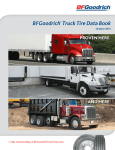
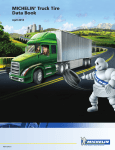
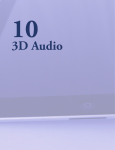
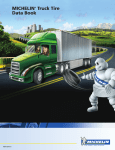




![Trailer Roll Stability (TRS) Installation Manual [L30040]](http://vs1.manualzilla.com/store/data/006020641_1-040a22153212ab13bbec744ca183c148-150x150.png)
